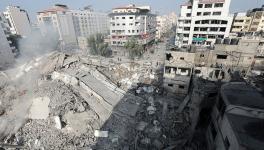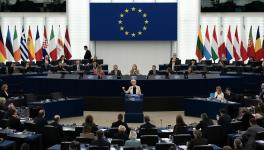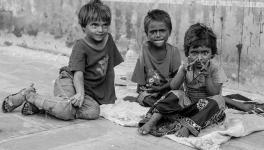Nukes: Deterrence or Destruction?
On May 11, 1998, India conducted three nuclear bomb explosions in Pokhran, followed by two more explosions on May 13. Operation Shakti was a success. In response to Indian jingoism, on a sizzling sweltering May 28, Pakistan successfully conducted five nuclear tests at Chagai, followed by another in the Kharan desert on May 30. The war mania that followed the tests led to frenzied celebrations among the middle class on either side of the divide.
In a paper on “The Cost of Nuclear Weapons in South Asia”, Peter Lavoy, the former director for Counterproliferation Policy in the United States, wrote: “New Delhi and Islamabad refuse to reveal what they spend on nuclear weapons or delivery systems. Based on likely labour, facility, and material costs, however, one can estimate that each state has allocated more than $1 billion to design and manufacture a small number of nuclear-capable missiles (Prithvi and Agni for India and Ghauri and Shaheen for Pakistan). Each side is likely to have spent five times that figure for the production of fissile materials and manufacture of a few weapons.”
Massive international sanctions were the first outcome of the explosions. The then Pakistani prime minister, while congratulating the people of Pakistan, froze their foreign currency accounts to retire the growing foreign debt. It became one of the biggest scams of history and “led to brutal economic nuisance both internally and externally. The stock market crashed because the investors lost their confidence,” The Economist commented in its August 1998 edition. It went on: “After the euphoria of its nuclear tests, Pakistan faces [faced] economic collapse and political bankruptcy.” So, the bombs had fallen directly upon the people; they were the mutations.
For India, nuclear explosions were necessary to meet the “Sino-Pak threat”. For Pakistan, “it was a suitable reply to India”. Both states submitted themselves to “the peaceful production of the means of destruction”, which, as Herbert Marcuse warned, “deforms the defenders and that which they defend”. How could destruction be an alternative to peace? The ordinary peaceful Japanese citizens suffered the brunt of the bombing of Hiroshima and Nagasaki, not the ruling class who lived in Tokyo. And those who congratulated people on procuring lethal bombs knew that history precisely but acted indifferently.
Barring the United Kingdom, France, and Russia, the western condemnation of India after Pokhran was unequivocal. Yet, inwardly, they smiled at the obscenity and vulgar narcissism of a show of power by two poverty-ridden states. The nuclear race, like any race for ammunition, suited their long-term hegemonic interests. The end of the Cold War necessitated the realisation of capital through a nuclear war or at least a nuclear arms race in the periphery. Who could have gratified their destructive instinct better than the ruling class of India and Pakistan, where fear and phobia are ingrained deeply in the psyche of the middle class? But where is their enemy? Over a billion people live in India and Pakistan, the majority devoid of basic amenities, yet their governments foster enmities and hostilities across an imaginary line drawn by Cyril Radcliffe.
Much before the COVID-19 crisis, the Indian government admitted 22% of its population lives below the poverty line, which has many definitions but no consensus. Nearly one-sixth of total diabetics belong to India. A large number die of preventable diseases that the West has eradicated. Tuberculosis, the poor man’s disease, is still the biggest threat to life in India and Pakistan.
In Pakistan, according to the Asian Development Bank, 24.3% of the population lived below the national poverty line in 2015, while 38.8% of the national population was poor based on the multidimensional poverty index. For every 1,000 babies born in Pakistan, 67 died before their fifth birthday. The picture of the debt-to-GDP ratio of 76.73% is equally dismal. The external debt stands at around $105 billion (2019). Pakistan spends 4% of its GDP on the military, making it the ninth-highest military spending country (just below Israel at 4.3%) and 2.6% on health, a highly overestimated if not altogether fictional figure.
What changes the nuclear options have brought in the destiny of the people of Pakistan remains the existential question. If the whole idea behind the exercise was a reduction in the military expenses, it backfired, and if it was meant to strengthen defence against Indian aggression, things have not really turned out as expected.
“External policy”, for Max Horkheimer, is “the continuation of the internal policy”, and internally, the establishment became more active and coercive. According to Human Rights Watch, the American invasion of Afghanistan spurred former president Gen Pervez Musharraf to arrest several alleged terror suspects who later went missing. An inquiry commission to investigate the ‘forced disappearances’ has so far received 3,000 such instances. (See Amnesty International, 2016). Emboldened by US backing, Musharraf allegedly went on a killing spree. Akbar Bugti, a former conformist and ex-governor of Balochistan, was assassinated after “months of failed attempts” by the armed forces to capture him in his hometown. “The army’s bombing of Dera Bugti resulted in indiscriminate killing and displacement of 1,60,000 people in the region,” journalist Rosheena Zehra wrote in The Quint in August 2017. Bugti, Brutus of his people, became a symbol of Baloch resistance.
Another spontaneous movement led by the students from the northwest, the Pashtun Tahafuz Movement (PTM), spread like wildfire. It blamed the Army for the destruction of the region and supporting Taliban-led terrorism. The state crackdown was immediate. In recent days, one of its prominent leaders, Arif Wazir, was murdered brutally. The incident was ignored by the media and the State did not condemn it either. He was the 18th identically-assassinated member of his family.
At around this time, the body of a Baloch dissident was found in a canal in Uppsala, Sweden. Later, another body of a female Baloch dissident was found in Toronto. A 2011 report in the New York Times had presaged that Inter-Services Intelligence spies have approached academics and journalists in the United States and threatened them not to speak about the insurgency in Baluchistan or human rights abuses by the Pakistani Army.
History has proven that armies that fight wars against their people invariably end up losers. The invitation to graze while fighting a thousand-year war to save one’s faith sounds neither romantic nor pragmatic. It is doctors, engineers and workers of the world who signify the life unvanquished, not those who make the nukes that destroy humanity.
“There is a crack in everything, that’s how the light gets in,” wrote Leonard Cohen. Is COVID-19 the crack from where the light will enter the India-Pakistan divide, lead their people to fight the inhuman system of capitalism and live-in peace?
The author is an Australian Pakistani writer, columnist and academic associated with Western Sydney University. The views are personal.
Get the latest reports & analysis with people's perspective on Protests, movements & deep analytical videos, discussions of the current affairs in your Telegram app. Subscribe to NewsClick's Telegram channel & get Real-Time updates on stories, as they get published on our website.
























